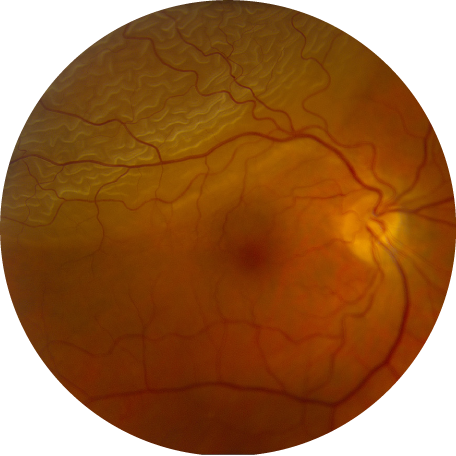What is a retinal detachment?
A retinal detachment is a detachment of the retina, most commonly as a result of retinal holes, horseshoe tears, lattice degeneration, or trauma.
What causes retinal tears or retinal holes?
The vitreous is the gel-like structure that occupies the space in the back of the eye between the lens and the retina. As a normal, age-related process, this vitreous gel degenerates and liquifies; as this liquefaction occurs, the vitreous gel collapses upon itself, separating from various attachments to the retina. In most individuals, this gel separation occurs spontaneously and does not cause any problem, however, in some individuals, the now-mobile vitreous gel remains abnormally adherent to certain areas of the retina, leading to the creation of a retinal tear. A hole or tear in the retina can cause the now-liquified vitreous gel and surrounding liquid in the back of the eye to now be able to transmit through the tear, leading to a retinal detachment, and severe vision loss or blindness if left untreated.
What is the treatment for retinal tears?
If a retinal tear is detected before significant fluid has collected under the retina, the tear can be treated with laser or with a retina freezing treatment known as cryoretinopexy, to “spot-weld” the retina in place by intentionally creating a wall of laser scarring to the retinal tissue around the tear. This treatment, which can be performed in the office in 10-20 minutes, prevents further fluid from separating the retina from the underlying eye wall, and should be done as soon as reasonably possibly in order to prevent progression of a retinal tear to retinal detachment.


How are retinal detachments treated?
Various treatment options exist for the repair of a retinal detachment, including the following:
Pneumatic retinopexy:
typically performed in the office, this procedure involves using a combination of an air or gas bubble injected into the back of the eye to flatten the retina and either retina laser or cryotherapy to seal the retina around the holes or tears in the retina.
Scleral buckle:
performed in a hospital or surgery center operating room, this procedure involves surgery on the outside of the eye to modify the shape of the eye and flatten the detached retina using, most commonly, a silicone band placed around the eye, in conjunction with cryotherapy to seal the retinal holes or tears.
Vitrectomy:
the most common procedure for repairing retinal detachments, this procedure is performed in a hospital or surgery center, and involves removal of the vitreous gel from the back of the eye, followed by flattening the detached retina using a combination of an air/gas/silicone oil bubble and retina laser to seal the tears in the retina.
